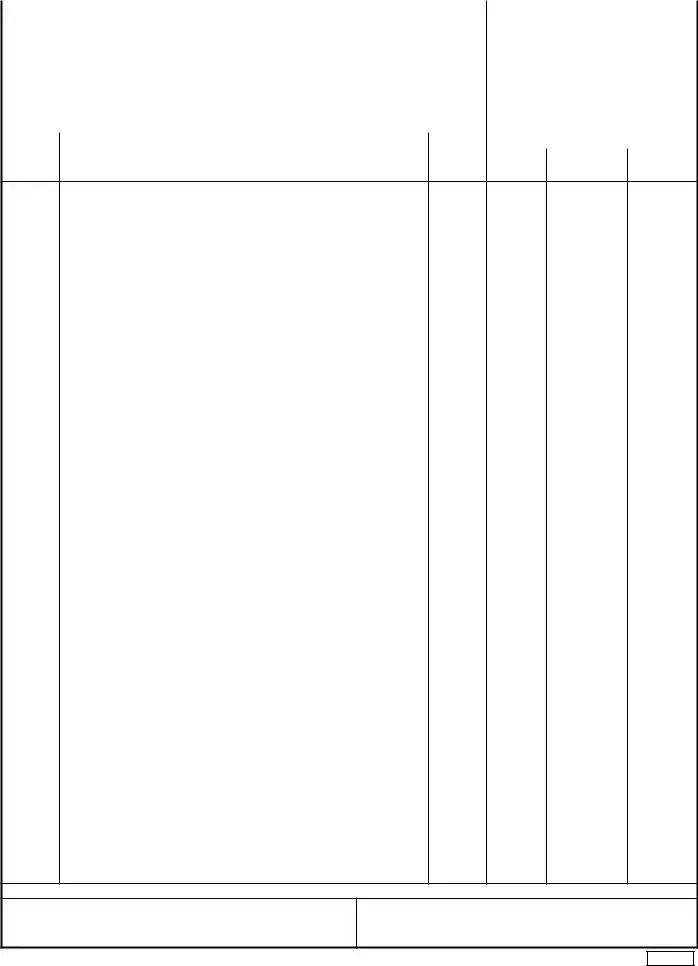The DD Form 1348-1 is a crucial document in the military supply chain, serving as a requisition and shipping document. Similar to the DD 1750, it lists items being requested or shipped, including their stock numbers and descriptions. Both forms ensure that the necessary information about the items is communicated clearly, facilitating accurate inventory management. The DD 1348-1, however, is primarily focused on the requisition process, while the DD 1750 emphasizes packing and contents, making them complementary in the logistics process.
The DD Form 250, known as the Material Inspection and Receiving Report, is another important document in military logistics. This form confirms that items received match the items ordered, similar to how the DD 1750 details what is packed. While the DD 1750 focuses on the packing list, the DD 250 serves as a receipt that verifies the condition and quantity of the items upon arrival. Both documents work together to ensure accountability and accuracy in the supply chain.
The SF 122, Transfer Order, is used to transfer property between federal agencies. Like the DD 1750, it contains information about the items being moved, including descriptions and quantities. However, the SF 122 specifically facilitates the transfer process between entities rather than detailing packing information. This makes it essential for inter-agency logistics, while the DD 1750 ensures that the packed items are correctly listed and accounted for.
The DD Form 1149, Requisition and Invoice/Shipping Document, is another form that shares similarities with the DD 1750. This document serves as both a requisition and an invoice for items being shipped. It includes details about the items, such as stock numbers and descriptions, which parallels the information found on the DD 1750. However, the DD 1149 combines the functions of requisitioning and invoicing, while the DD 1750 is strictly focused on packing details.
The DA Form 2062, Hand Receipt, is used to acknowledge receipt of property by an individual or unit. Similar to the DD 1750, it provides a detailed list of items, including stock numbers and descriptions. However, the DA Form 2062 is primarily focused on accountability for items once they are received, while the DD 1750 details the items being shipped and packed. Both forms are essential for maintaining accurate records in military logistics.
The DD Form 1384, Transportation Control and Movement Document, is used for tracking the movement of cargo. It includes information about the shipment, similar to the DD 1750, but focuses more on transportation details rather than packing specifics. While the DD 1750 provides a packing list, the DD Form 1384 ensures that the items are tracked throughout their journey, making both forms vital for effective logistics management.
The DA Form 4002, Inventory Management Document, is utilized for inventory control and management. It lists items in inventory, akin to the DD 1750, but is more focused on tracking stock levels and availability. While the DD 1750 details what is packed and shipped, the DA Form 4002 helps manage ongoing inventory, ensuring that all items are accounted for throughout their lifecycle.
In the realm of property transactions, a careful approach is crucial for the successful transfer of ownership, and understanding the necessary documentation is essential. For instance, the Mobile Home Bill of Sale provides clarity in mobile home sales, ensuring both the buyer and seller are aware of their rights and responsibilities throughout the process. This form not only serves as proof of the sale but also outlines important details about the transaction, which can help avoid ambiguities and protect all parties involved.
The SF 126, Request for Transfer of Excess Personal Property, is another form used in the logistics process. It requests the transfer of surplus property between agencies and includes details about the items, similar to the DD 1750. However, the SF 126 is focused on excess property rather than packing lists, making it a different yet complementary document in the overall logistics framework.
Finally, the DD Form 1610, Request and Authorization for Temporary Duty (TDY) Travel of DOD Personnel, while not a packing list, is related in that it facilitates the movement of personnel and equipment. It ensures that all logistics surrounding travel and transport are accounted for, similar to how the DD 1750 ensures that items are packed correctly. Both forms contribute to the smooth operation of military logistics, albeit in different contexts.


